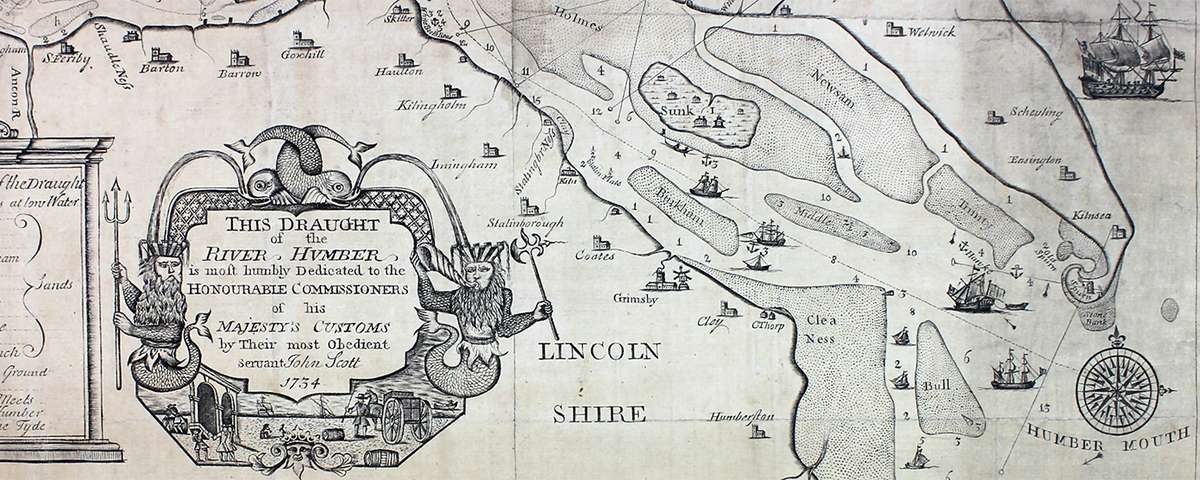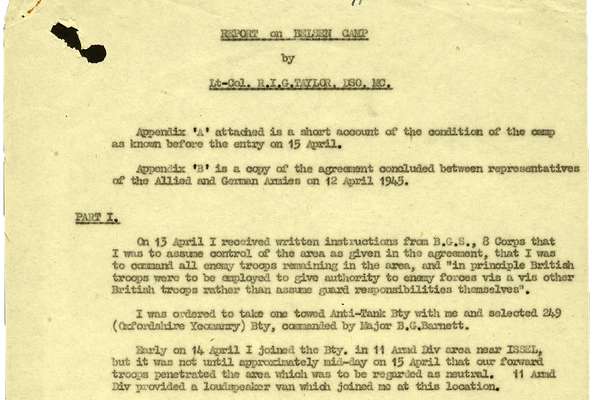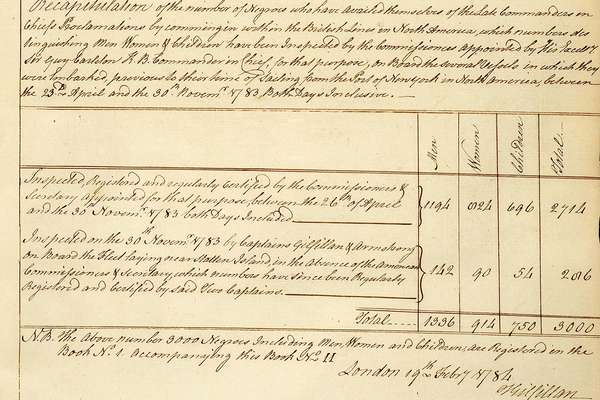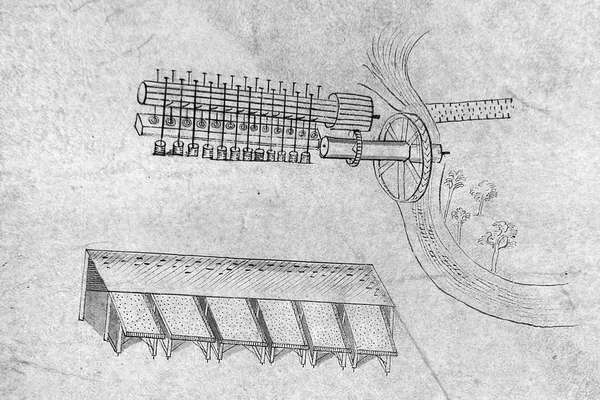The birth of Ravenser Odd
Documents from a medieval court case give an insight into Ravenser Odd’s emergence from the sea. The people of nearby Grimsby complained to King Edward I that the new island was preventing people coming to Grimsby to trade.

Petunt quod viginti homines de Ravenserod sint sumoniti per brevem domini regis coram justicios de Banco ostensur’ quia impediunt mercatores et transmarinarios et alios cum navibus suis venire ad portum de Grimesby, contra inhibicionem domini regis.
They ask that twenty men of Ravenser Odd might be summoned by writ before the justices of the bench to show why they are preventing merchants from overseas and others from coming with their ships to Grimsby, contrary to the king’s prohibition.
A petition from the people of Grimsby complaining about the new island of Ravenser Odd. Catalogue reference: SC 8/339/15961
In 1290 there was an investigation into their complaint and the records of that investigation still survive. The people of Grimsby told the king’s investigators that in the time of King Henry III ‘a certain small island was born’, the distance of ‘one tide’ from Grimsby, and fishermen began to dry their nets there. One day a ship was wrecked on the island, and someone made a cabin from the wreckage and began to live there. That man, the first permanent resident of this new land, began to sell food and drink to passing sailors.
Over time, more people began to live on Ravenser Odd and eventually some ships began to stop there to buy and sell goods, as the new island was nearer to the sea than Grimsby. Convenience was not the only reason that merchants stopped at Ravenser Odd rather than Grimsby, though, as the investigation suggests that the people of Grimsby were not paying fair prices for fish.
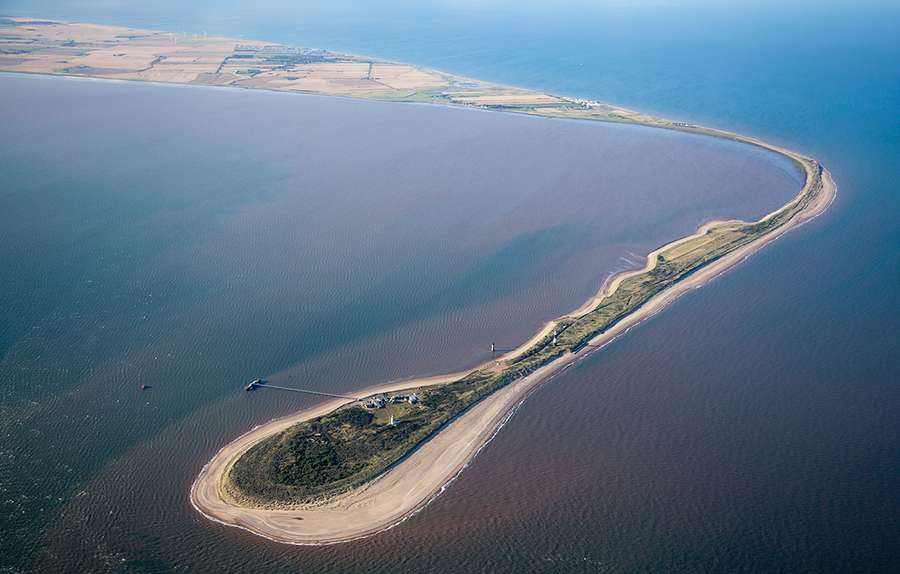
Spurn Head, next to where Ravenser Odd used to be, photographed in 2013. Source: Alamy Stock Photo
The investigation led to a court case in the following year at the Court of King’s Bench, the most senior criminal court in England. The people of Grimsby repeated their complaint, saying that they were suffering and could not pay their taxes because the new island was arresting merchants and compelling them to go to Ravenser Odd rather than Grimsby.
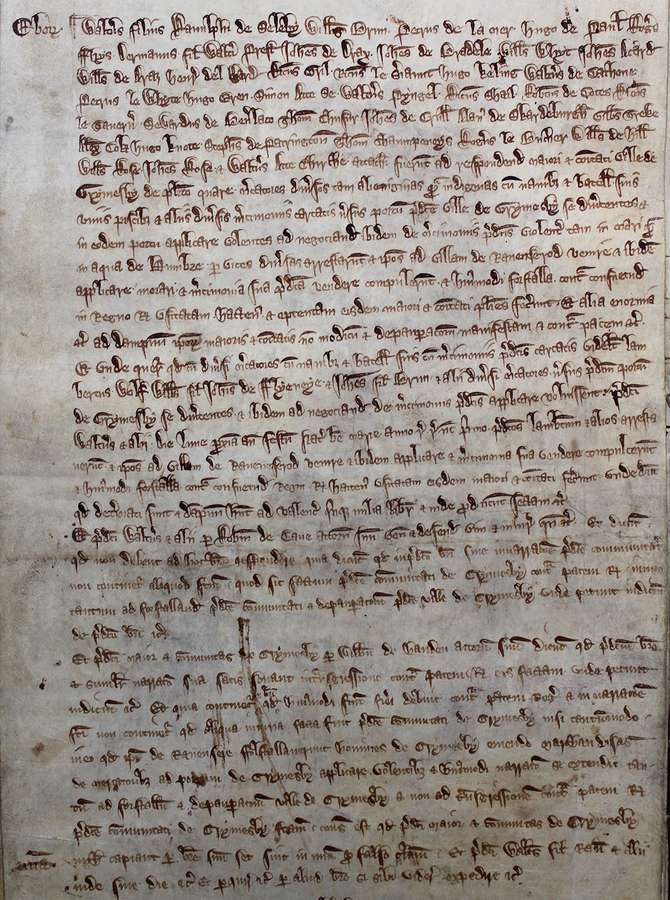
Walter, son of Ralph de Seleby, William Brim, Peter de la Mer, [several dozen other names] were attached to respond to the pleading of the mayor and commonalty of Grymesby, for what reasons they had violently arrested, by various forces, various merchants, foreign as well as native, both in the sea and in the water of the Humber, with their ships and boats laden with wines, fish and various other merchandise, directing their course towards the aforesaid town of Grymesby, and wishing to harbour in that port, in order to deal there with the merchandise aforesaid, and had compelled them to go to the town of Ravenserod and there to harbour, to remain and to sell their aforesaid merchandise, and in this way have forestalled against the usage at this day practised in the king’s dominion, and to the same extent by the mayor and commonalty aforesaid. And other irregular things, etc., to the no little injury of that mayor and that commonalty, and their manifest impoverishment, and against the peace, etc...
The court case between the people of Grimsby and the people of Ravenser Odd. Translation based on that of J. R. Boyle in Lost Towns of the Humber. Catalogue reference: KB 27/129
Unfortunately for the people of Grimsby, the king’s court was not interested in their local trade dispute. The court ruled that the island of Ravenser Odd had not done anything that went against the king’s peace and so the people of Grimsby had to pay a fine for making a false claim. Ravenser Odd had won the day.
Becoming a borough
After their victory in court, the people of Ravenser Odd pressed their advantage and petitioned the king to be made a borough. Becoming a borough would give the town a range of advantages, including managing their own local justice, the ability to leave land and property to whoever they wanted, and the right to hold markets and an annual fair.
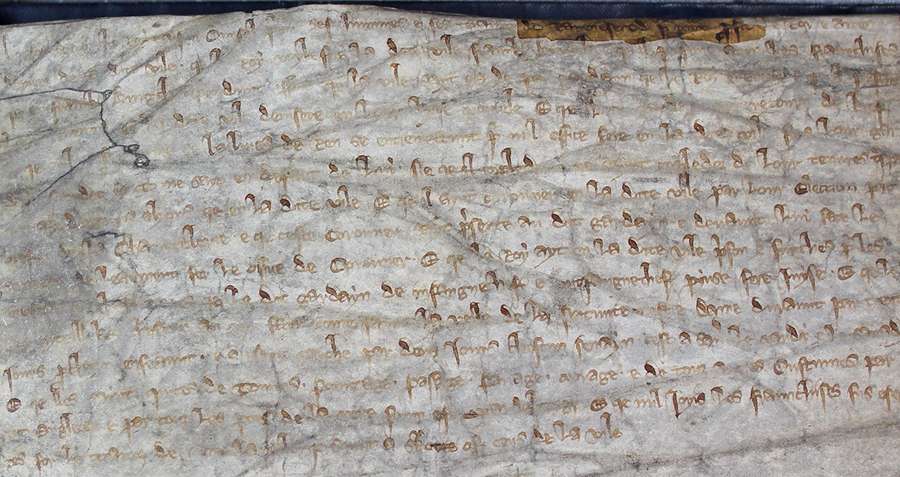
A petition from the people of Ravenser Odd for their town to become a borough. The name of the town is highlighted by a later scholar painting it to make the text more visible. Catalogue reference: SC 8/157/7823
On 1 April 1299, King Edward I granted their request, issuing them a charter confirming their new rights and responsibilities. Ravenser Odd shares this birthday with a much more well-known borough in the present, Kingston-upon-Hull, whose charter is copied immediately above Ravenser Odd’s in The National Archives’ record.
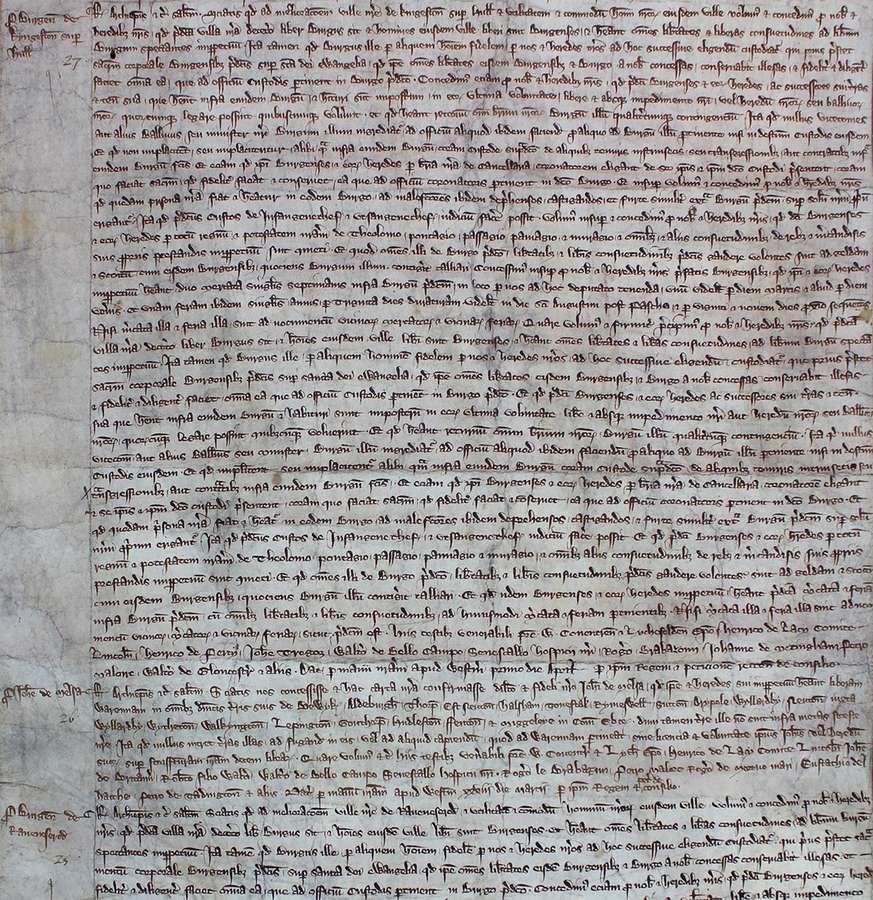
The charter roll for 1299, showing the charters for Kingston-upon-Hull and Ravenser Odd. Hull’s charter comes first, then there is a grant to John of Melsa (Meaux Abbey), then the Ravenser Odd charter. They are all indexed in the lefthand margin. Catalogue reference: C 53/85
Piracy and war
Having won their court case and become a borough, Ravenser Odd embarked upon a prosperous and slightly criminal half century. Complaints flooded in from foreign nobles and merchants about the island’s behaviour. Among others, the King of Norway accused the people of the island of stealing goods from a shipwreck and a German merchant complained that the master of his ship had been killed and its goods stolen. There are repeated mentions of the island in the patent rolls, the records of public expressions of the king’s will, asking the islanders to stop extorting money from foreign merchants.
The island also assisted the crown. Ravenser Odd took part in England’s 14th-century wars with Scotland, sending ships to join the naval forces of both Edward II and Edward III. As part of their responsibilities as a borough, they also returned townspeople to parliaments across the 14th century.
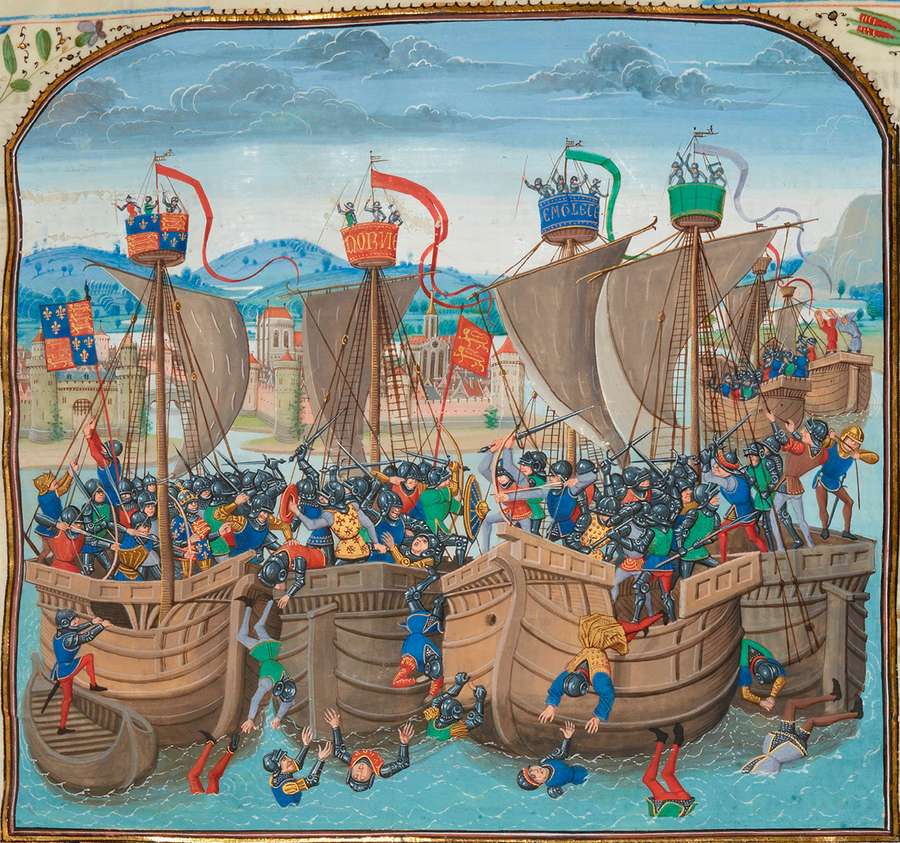
15th-century painting of Edward III's navy in combat against the French at the Battle of Sluys, 1340. Source: Bibliotheque Nationale de France, MS Fr. 2643, Folio 72r, via Wikipedia.
The island’s destruction
Even in the early 1300s, there were signs that all was not well on Ravenser Odd. The sea had already begun to reclaim the island. In 1329, the king granted the town quayage, the ability to collect and keep money from ships docking in their harbour, to repair their quay that had been damaged by the sea. Quayage for the same purpose was granted again in 1333, 1335, 1340, 1344 and 1347, suggesting that any repairs that the townspeople made were not lasting long.
By 1343, the town was in dire straits. The king wrote to local officials asking them to conduct an inquisition to see if the people of Ravenser Odd could continue to pay their taxes, as he had heard that many houses had been washed away by the sea. In 1346, he repeated his request, saying that the town was greatly impoverished and many of the inhabitants had left as living there continued to become more dangerous.
The inquisition took place in 1346, and confirmed the king’s information about the town’s poor condition. At this point only a third of the townspeople remained on the island, and ‘two parts’ of the town had been washed away by the sea. In the Close Rolls of the following year, the king reduced the town’s tax burden, saying that 145 buildings belonging to one woman had been destroyed, along with many other buildings and 42 plots of land.

Inquisition taken at Ravenserod on Thursday in the feast of St. Laurence the martyr, in the 20th year of the reign of king Edward the third after the conquest, before Nicholas Gower, Amandus de Frothyngham, and Peter de Grimsby, appointed by the commission of the lord the king to enquire concerning the impoverishment and destruction of the town of Ravenserod in Holdemesse, in the county of York, by the flowing of the water of the sea often inundating the said town, and concerning all other circumstances ... Who say upon their oath that two parts of the tenements and soil of the said town and more, by the flowing of the water of the sea often inundating the said town, have been thrown down and carried away, and the said town by the flowing of the water aforesaid has been daily diminished and carried away. And they say that many men of the said town, who were accustomed before this time to bear the burdens contingent to the said town, have withdrawn themselves with their goods and chattels from the town aforesaid, because of such daily increasing dangers there, making an abode elsewhere...
The inquisition into whether the people of Ravenser Odd can pay their taxes. Translation based on that of J. R. Boyle in Lost Towns of the Humber. Catalogue reference: C 145/156/6
The Meaux Abbey Chronicle, a history of a local abbey, recorded the island’s destruction in graphic terms. In its records of the period 1349–1353, the chronicle states that floods had destroyed the foundations of the chapel on Ravenser Odd and the bodies of the dead had been washed out of their graves. This destruction, the chronicler argues, was a punishment from God for the islanders’ evildoing and piracy.
A manorial account in 1355 includes Ravenser Odd but the island has nothing written next to it in the record – just a blank page. By 1359, an inquisition into the property of a deceased inhabitant of Ravenser Odd said that the town had been ‘completely annihilated’ by the sea.
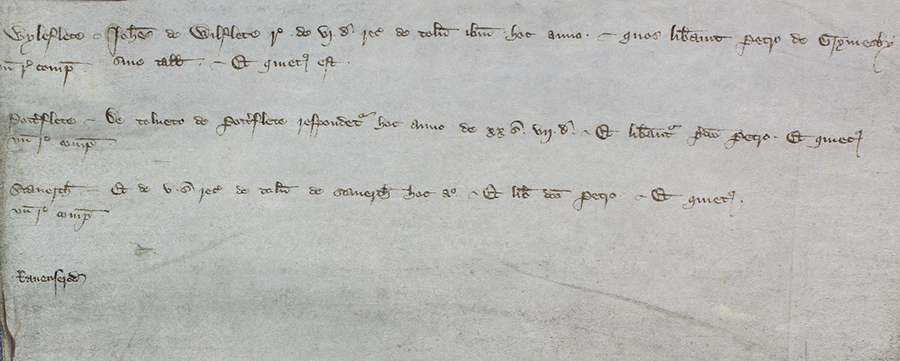
The final manorial account record for Ravenser Odd, showing the name of the town and then a blank space where the accounts should be. Catalogue reference: SC6/1083/5
As this 1734 map of the Humber makes clear, Ravenser Odd had disappeared without a trace. Without the records at The National Archives, it would not be possible to piece together its fascinating story.
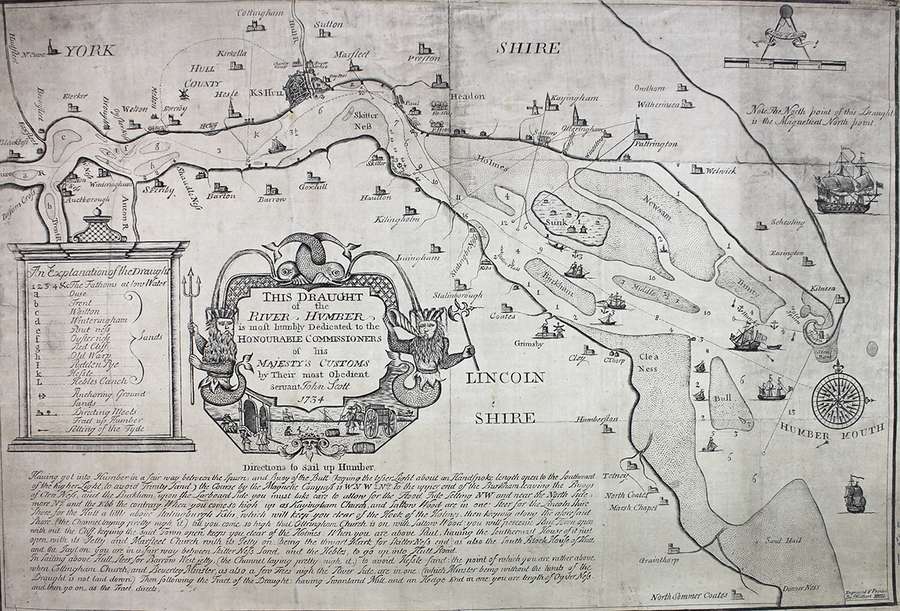
A 1734 map of the Humber, with nothing remaining of the island of Ravenser Odd. Catalogue reference: MPE 1/525
Records featured in this article
-
- From our collection
- SC 1/19/171
- Title
- Eric III, king of Norway, writing to Edward I about a shipwrecked citizen
- Date
- 1296
-
- From our collection
- C 66/150
- Title
- Letter to Edward II including the complaint from a German merchant
- Date
- 1318–1319
-
- From our collection
- C 66/209
- Title
- Letter from Edward III asking for an inquiry into whether the people of Ravenser Odd could afford their taxes
- Date
- 1343–1344
-
- From our collection
- C 66/218
- Title
- Letter from Edward III repeating his request
- Date
- 1346
-
- From our collection
- C 54/181
- Title
- Close Rolls in which Edward III reduced Ravenser Odd's taxes
- Date
- 1347
-
- From our collection
- C 135/143/23
- Title
- Inquisition into the property of Peter Cok of Ravenser
- Date
- 1359
Read more
Blog: A rediscovered image of King Henry III
Read all about– and see for yourself – what may be the earliest portrait of an identified English king in a public record, happened upon by Professor David Carpenter from King’s College London .
Research Guide: How to use the Manorial Documents Register
Manorial records are a vital source for local, social, family and economic history. They can reveal historical information about local areas in England and Wales going back centuries.
Research Guide: Inquisitions post mortem
Inquisitions post mortem were local inquiries into valuable properties, in order to discover what income and rights were due to the crown and who the heir should be. Learn how to use them.
